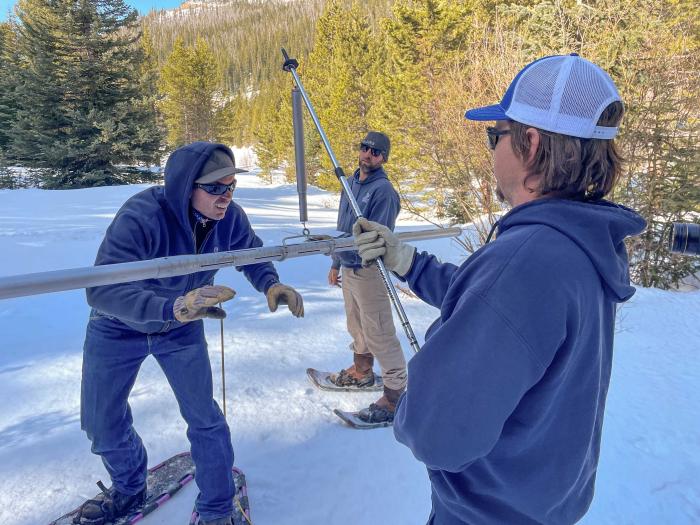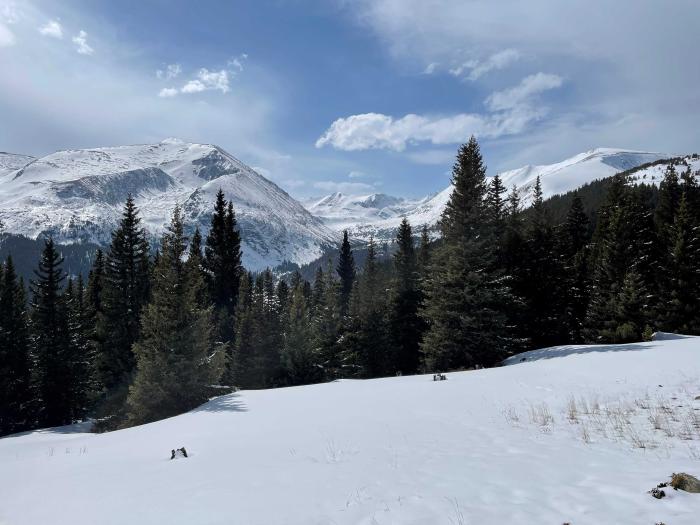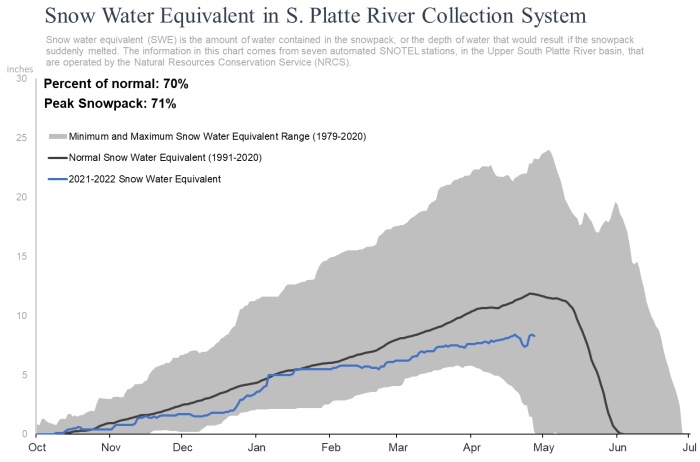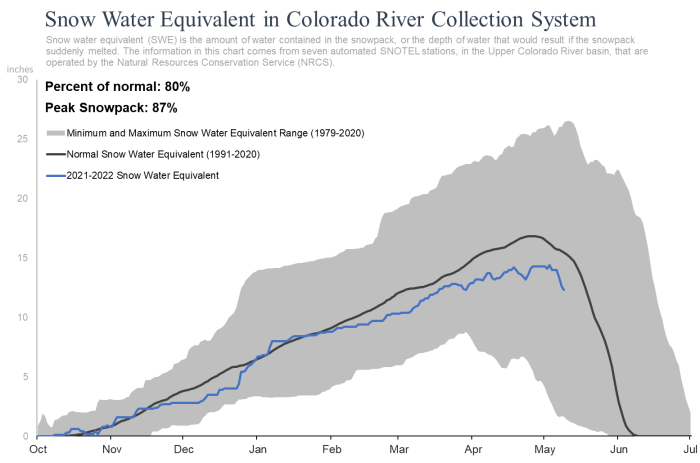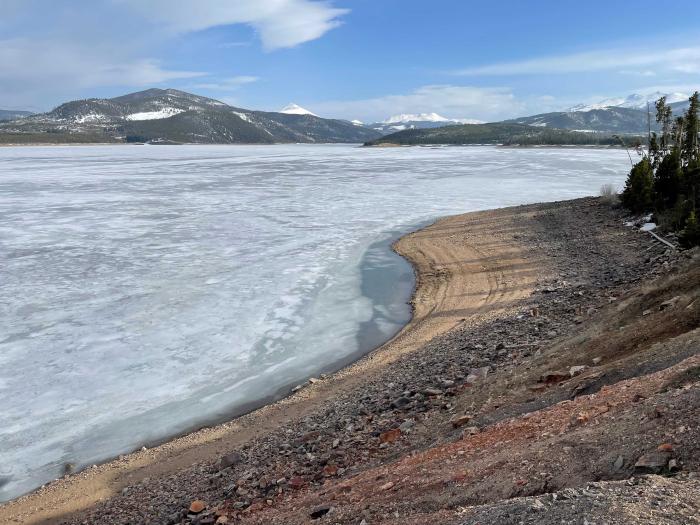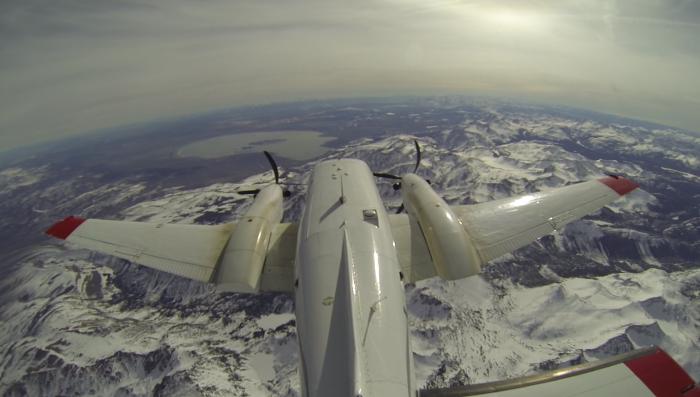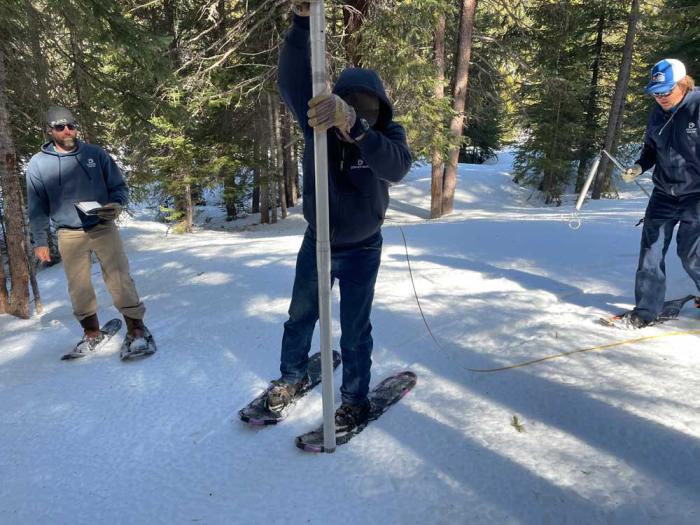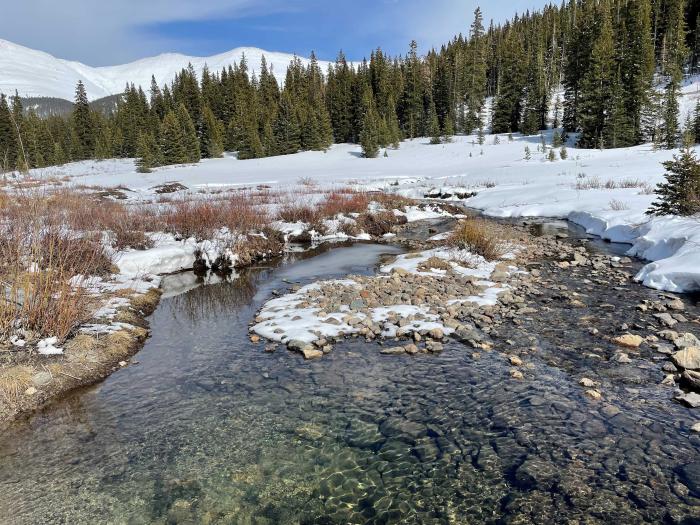2021-22 snowpack peaks below average for Denver Water
This year’s snowpack didn’t rate an A+, but B’s and C’s are still passing grades.
Even with a late-season surge of snow in Colorado’s high country, the mountain snowpack in Denver Water’s two collection areas for the 2021-22 season peaked below average.
“It’s critical that customers follow our summer watering rules, which begin May 1. A below-average snowpack is a reminder to all of us that we should always use water wisely,” said Nathan Elder, manager of water supply for Denver Water.
“We’ve seen people turn on sprinklers here in late April. That’s generally too early. People can ease their lawns out of winter dormancy with some watering in May, starting slowly. Abiding by our watering rules is the smart thing to do given Colorado’s arid climate.”
Can you list the seven key points of Denver Water’s annual summer watering rules? Click here to see how you scored.
Right now, Elder said, Denver Water doesn’t expect to add additional watering restrictions beyond the up to three times a week during cooler hours that are standard practice for the utility’s customers.
But with an underwhelming snowpack, he and other planners will be watching supplies carefully and could change course if needed.
The snowpack in Denver Water’s two collection areas hit its peak for 2022 in late April and early May, at 71% of average on April 26 in the Upper South Platte River Basin and at 87% of average on May 3 in the Upper Colorado River Basin.
“The amount of snow we saw this winter could have been better,” Elder said. “It didn’t come as a surprise — as we’ve been watching the numbers all winter and taking proactive measures to maximize water supply. And customers have helped us out with low wintertime demands and smart water use, trends I hope to see continue this spring and summer.”
The peak snowpack is the day when the snow holds the highest level of snow water equivalent — a term used to describe the amount of water frozen in the snow.
Peak snowpack numbers are important for Denver Water because it helps the utility’s planning team estimate how much water will end up in its reservoirs when the snow melts in the coming weeks. The water is used by 1.5 million people across the metro area who are served by Denver Water.
Snowpack levels vary from year to year, and there have been some extremes over the years.
For example, during the winter of 1996-97, the snowpack in the South Platte River Basin where Denver Water captures its water peaked at 203% of normal. During the drought years of 2001-2002, the snowpack in the South Platte peaked at just 50% of normal.
Learn how the runoff season is critical to the water supply for 1.5 million people across Denver.
Elder said the 2021-22 snow season started slowly, with very little moisture in October, November and early December.
The mountains got a big boost at the end of December when several feet of snow fell over a two-week period. Then January and February were mostly dry in the mountains, but the spring saw a more active weather pattern.
The storms around the winter holiday season were critical to the overall snowpack. In the part of the Upper Colorado River Basin where Denver Water collects water, 28% of the total snowfall fell between Dec. 22, 2021, and Jan. 7, 2022.
After the peak, it typically takes about two months for all the snow to melt off the mountains. Denver Water’s total reservoir storage as of April 25 stood at 79% full, which is average for this time of year.
“Now that the snowpack has peaked, we switch gears from watching the snow accumulate to seeing how much snowmelt will actually make it into our reservoirs,” Elder said.
Many factors affect the spring runoff, including temperature, soil moisture and additional precipitation.
Elder and his planning team use a variety of resources and streamflow forecasts to make assessments and water supply forecasts.
One of the tools they used this year was information about the snow depths and water content collected by Airborne Snow Observatory, or ASO, flights over the Blue River Basin above Dillon Reservoir and the Fraser River Valley in Grand County.
The wealth of data covering hundreds of square miles of crucial watershed helped Elder and his team assess the amount of water expected to be collected for Denver Water’s customers.
“That information, collected with the help of a $1.9 million state grant for flights over several of Colorado's river basins, augments the information our crews collect on the ground and what we get from the automated SNOTELs,” Elder said.
Learn how a $1.9 million state grant will help Colorado manage its precious water resources.
“With the additional insight that data provides, I have confidence that our peak reservoir storage should reach 93% full, although we still could have some curveballs thrown at us due to weather and customer demands,” he said.
Recent soil moisture outlooks are better compared to last year, which should mean the ground won’t soak up as much of the melting snow before it reaches the rivers and streams.
The planners’ assessments of snowpack and water content are used to manage water supply between Denver Water’s reservoirs and to determine if Denver Water will issue any additional watering restrictions for its customers on the Front Range.
Denver Water also provides its water supply outlooks to the marinas on Dillon Reservoir and rafting companies on the lower Blue River below the reservoir.
Going into the runoff season, Dillon Reservoir storage levels are below average for this time of year, and it will take weather that’s on the wetter side in upcoming weeks to fill, Elder said.
“We’ve had years with above-average snowpack, but below-normal runoff,” Elder said.
“We really never know for sure what the water supply will be until about the Fourth of July when the runoff ends.”


